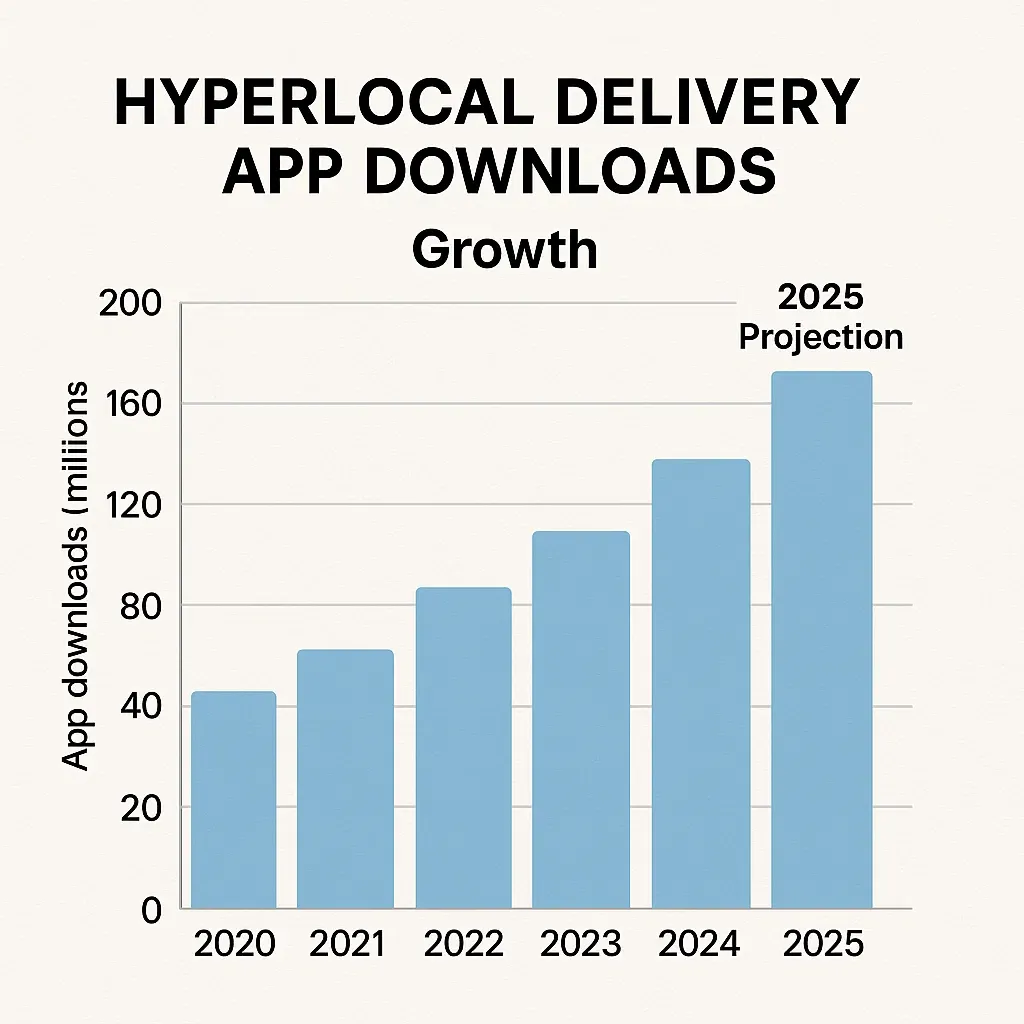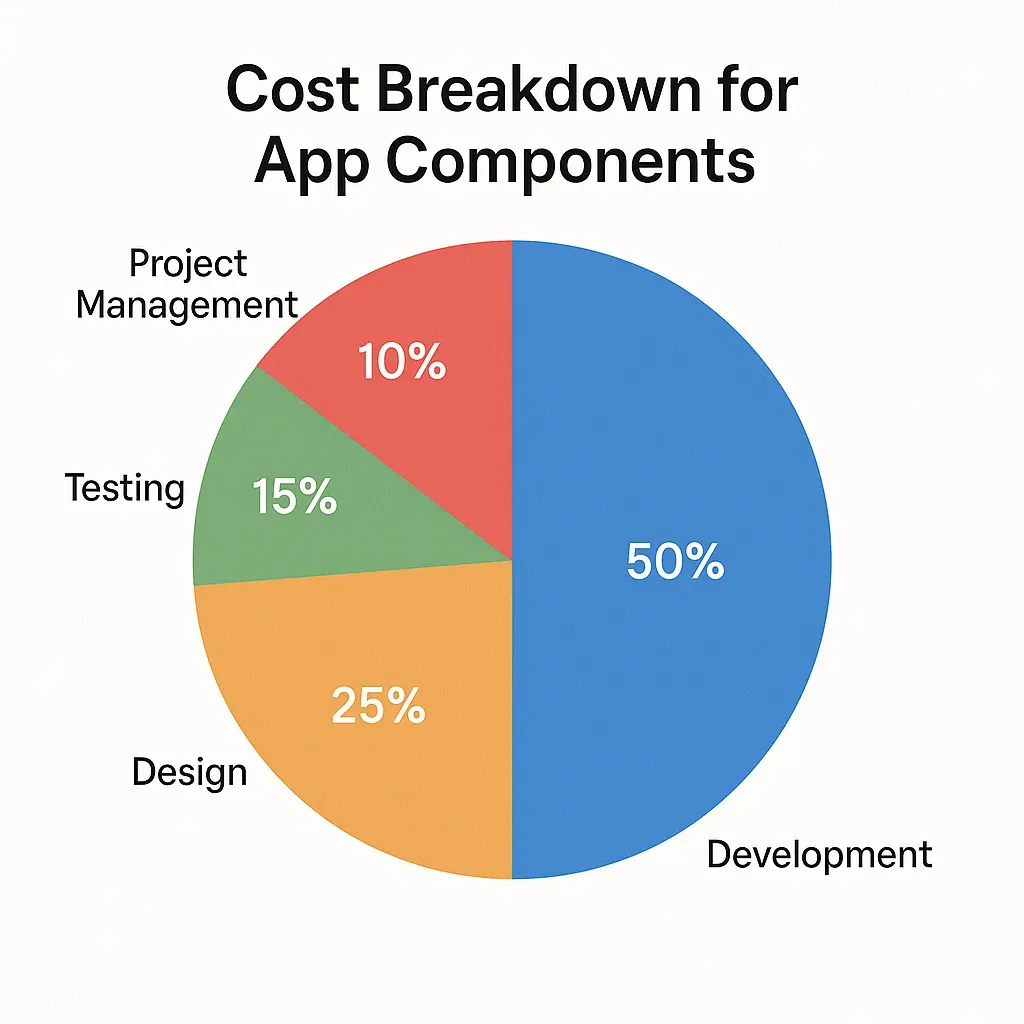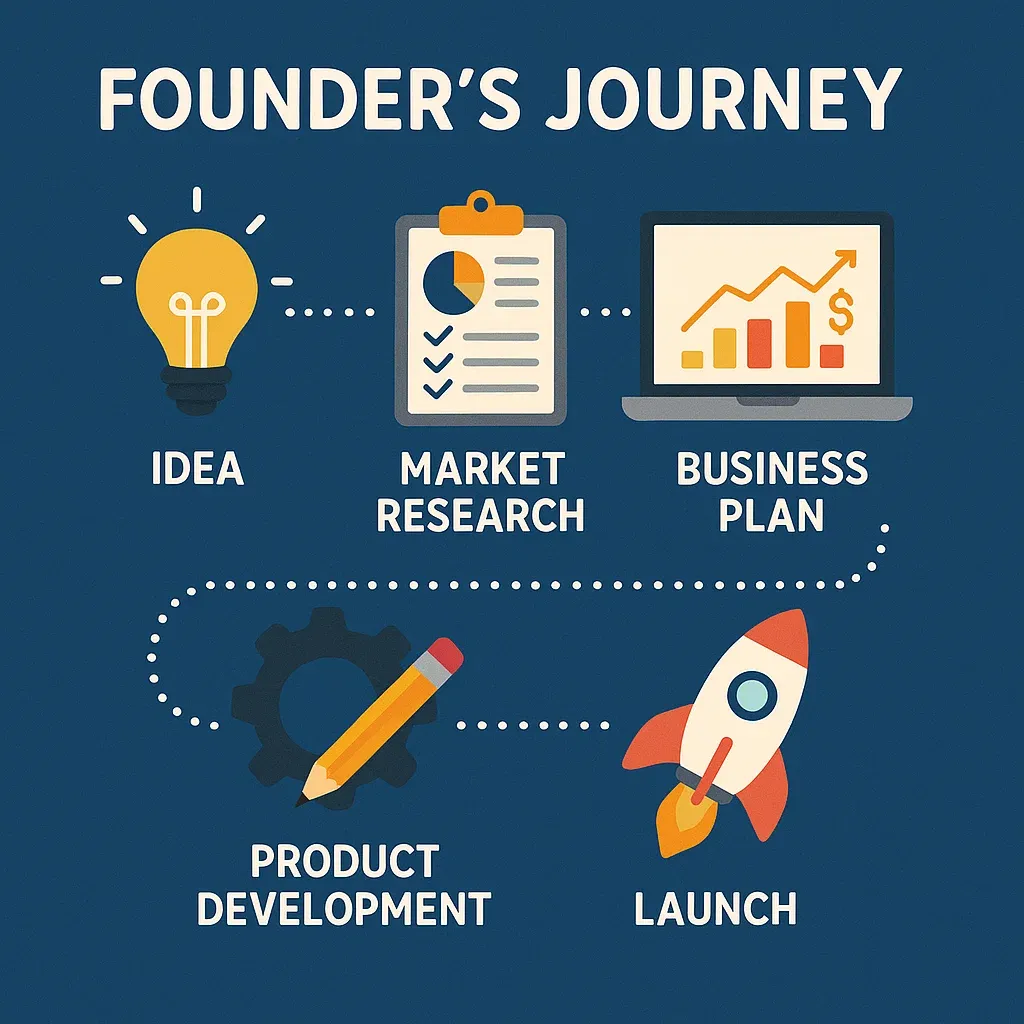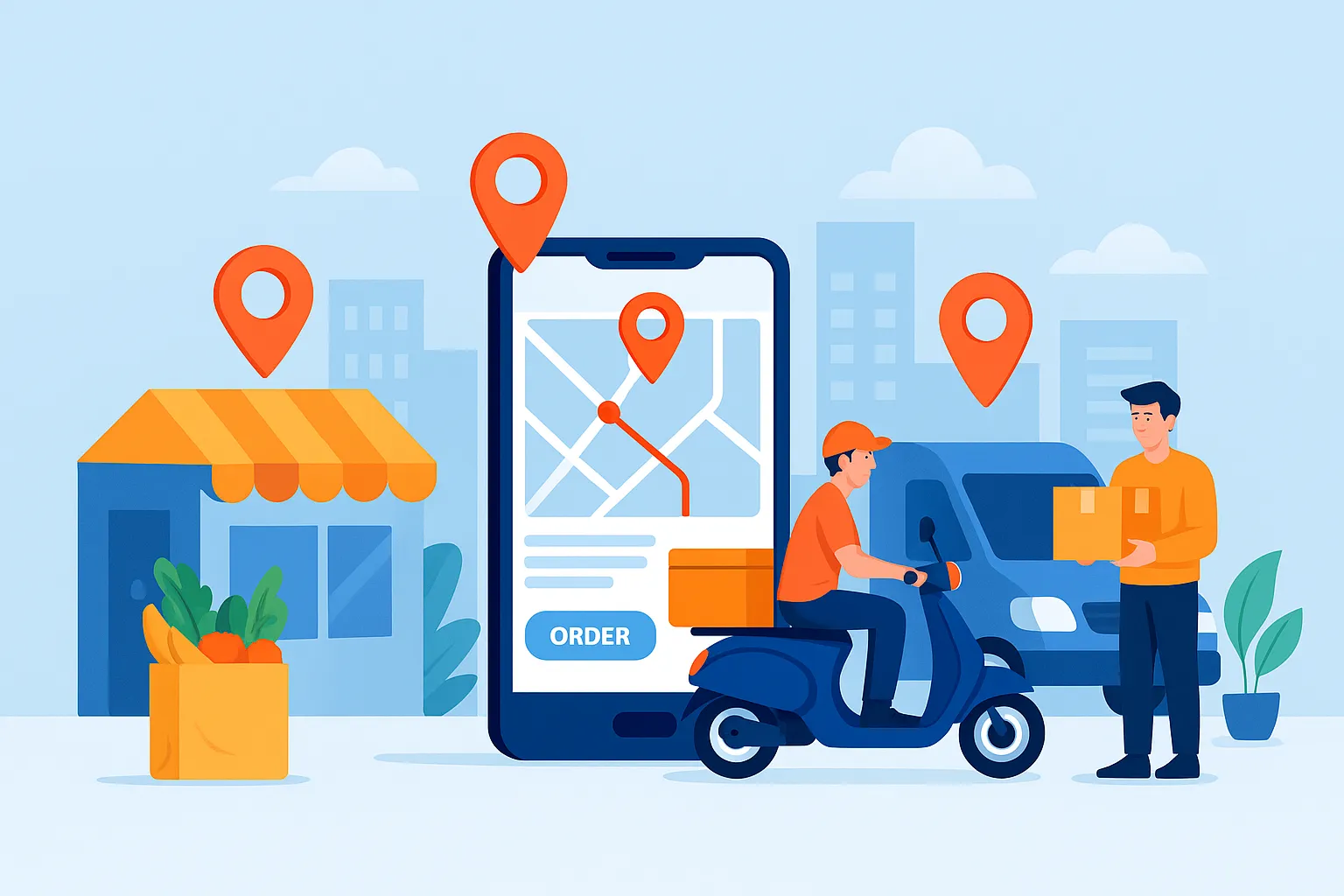Hyperlocal delivery apps are no longer a novelty—they’re a necessity. Whether it’s groceries, medicine, beauty products, or last-mile logistics, consumers today demand speed, convenience, and proximity. And in 2025, that demand is only growing louder.
For startup founders, entrepreneurs, and digital agencies looking to ride the next profitable tech wave, launching a hyperlocal delivery app is a highly promising move. But not just any app—success depends on choosing the right niche, deploying a smart business model, and getting to market fast with reliable, cost-effective On-Demand Delivery Solutions.

Read more: How to Develop an On-Demand Hyperlocal Delivery Service App
Why Hyperlocal Delivery Apps Are a Hot Opportunity in 2025
In 2025, the hyperlocal delivery market continues its sharp upward trajectory, driven by changes in lifestyle, urban density, and digital consumer behavior.
According to Statista, the global same-day delivery market is expected to surpass $26 billion by 2027, with a compound annual growth rate (CAGR) of over 20%. CB Insights highlights hyperlocal as a top-five emerging sector for venture capital, fueled by scalable logistics tech and real-time location intelligence.
What’s changed?
- Post-pandemic behaviors are sticky: Consumers have grown used to the convenience of deliveries.
- Rising urbanization: City dwellers prefer services that save time.
- Tech enablers: Better route optimization, AI-driven inventory management, and real-time tracking have removed friction.
Success stories like Dunzo, Rappi, and Getir have demonstrated not just traction but real profitability when scaled smartly. However, there’s still room—especially in Tier 2 and Tier 3 cities globally—where niche solutions can dominate with the right strategy.
Read more: Business Model for On-Demand Hyperlocal Delivery Service
Top Profitable Hyperlocal Delivery App Ideas to Launch in 2025
1. Hyperlocal Grocery Delivery App
Description: Connect local grocery stores with consumers for real-time delivery of fresh food and essentials.
Monetization: Delivery fees, surge pricing, vendor commissions, and featured store listings.
Why It Works in 2025: Consumers demand same-day essentials, and local sourcing reduces supply chain costs. It’s recession-resistant and a repeat-use app.
2. Hyperlocal Medicine Delivery App
Description: On-demand delivery of prescription and over-the-counter medications from nearby pharmacies.
Monetization: Subscription services for recurring needs, priority delivery charges, pharmacy partnerships.
Why It Works in 2025: The aging population and chronic illness management drive recurring demand. Trust and timely access are critical.
3. Last-Mile Courier & Document Delivery App
Description: Enable users to send parcels, documents, and packages across the city in a few hours.
Monetization: Per-kilometer delivery fee, premium express services, and B2B service integration.
Why It Works in 2025: E-commerce and businesses need agile, local delivery partners. High frequency and predictable demand.
4. Beauty & Personal Care Delivery App
Description: Deliver salon-grade beauty products and personal care essentials to doorsteps quickly.
Monetization: Product markups, brand partnerships, and influencer-driven product recommendations.
Why It Works in 2025: Instant gratification in self-care purchases is booming, especially among Gen Z and millennials.
5. Pet Supplies and Food Delivery App
Description: Real-time delivery of pet food, grooming items, toys, and healthcare products.
Monetization: Recurring subscription bundles, cross-sell of vet services, and affiliate vet care.
Why It Works in 2025: Pet ownership is rising, and pet parents expect convenience. High retention potential.
6. Local Farm-to-Table Produce Delivery App
Description: Deliver organic, farm-fresh fruits and vegetables from local producers directly to consumers.
Monetization: Weekly/monthly subscription boxes, premium organic-only plans, featured farmer promotions.
Why It Works in 2025: Sustainable eating is a lifestyle now, not just a trend. Local sourcing means faster deliveries and freshness.
What Makes an App Profitable in the Hyperlocal Delivery Niche?
The hyperlocal delivery market rewards those who understand logistics, consumer stickiness, and local partnerships. Here’s what top-performing apps have in common:
- Recurring Revenue Models: Subscriptions and repeat-use products (like groceries or pet food) ensure steady income.
- High Retention Rates: Strong UX and local loyalty boost repeat orders.
- Low Operational Overhead: Efficient route planning and gig economy delivery partners cut fixed costs.
- Scalable Acquisition Channels: Influencer partnerships, referral models, and geo-targeted marketing work wonders.
Startups choosing clone app development benefit further by reducing upfront tech investment. Ready-made clone solutions from providers like Miracuves enable you to launch faster, test the market quicker, and scale without costly delays.
Cost to Build a Hyperlocal Delivery App in 2025
Building a hyperlocal delivery app from scratch in 2025 can cost:
- Basic MVP: $10,000 – $25,000
- Mid-range product: $30,000 – $60,000
- Advanced app with real-time tracking, AI recommendations, and multi-vendor modules: $75,000 – $120,000+
Launch Your Multimodal AI Platform in Just 3–6 Days — Go Live with Miracuves from $2,800 to $3,300!
Cost factors include:
- Number of platforms (iOS, Android, Web)
- UI/UX complexity
- Custom backend logic
- Payment gateway and location API integrations
- Inventory and vendor dashboards
Using a clone solution (like a Dunzo Clone) from Miracuves drastically lowers your upfront investment, helps you hit the market in weeks instead of months, and minimizes technical risk.

Tips for Founders to Launch a Successful Hyperlocal Delivery App
- Build an MVP First: Don’t wait to perfect. Start small, launch fast, and iterate based on real feedback.
- Prioritize UI/UX: A cluttered interface loses customers. Keep it smooth, fast, and intuitive.
- Validate the Market: Run surveys, build waitlists, and do a soft launch in a limited area.
- Use a Scalable Backend: Ensure your tech can handle future volume without massive rebuilds.
- Invest in Post-Launch Marketing: Influencers, Google Ads, and community partnerships can fuel traction early on.

Read more: How to Market an On-Demand Hyperlocal Delivery Service App Successfully After Launch
Conclusion
The hyperlocal delivery ecosystem is booming in 2025, but opportunity favors the prepared. Whether it’s groceries, medicine, pets, or parcels, niche-focused hyperlocal apps are thriving. Their potential for profitability lies in smart monetization, high repeat usage, and tech efficiencies.
If you’re a founder or agency looking to launch fast and grow smarter, hyperlocal delivery is one of the best bets this year. The fastest route to success? Skip the ground-up build and explore scalable clone-based solutions.
At Miracuves, we help innovators launch high-performance app clones that are fast, scalable, and monetization-ready. Ready to turn your idea into reality? Let’s build together.
FAQs
Q:1. How much does it cost to build a hyperlocal delivery app?
The cost to build a hyperlocal delivery app with Miracuves ranges from $2,500 to $3,000, with a full Go-Live launch in just 3–6 days.
Q:2. What features should a successful hyperlocal delivery app include?
Real-time tracking, payment gateway, order scheduling, customer support chat, and vendor dashboards.
Q:3. Is it better to build from scratch or use a clone solution?
For most startups, clone solutions offer a faster, more cost-effective, and lower-risk way to launch.
Q:4. How quickly can I launch with a clone solution?
Typically within 4–6 weeks, depending on customization.
Q:5. Can I scale a cloned app later?
Yes, reputable providers like Miracuves build scalable, modular systems for long-term growth.
Q:6. Do clone apps support custom branding?
Absolutely—white-label solutions let you use your own name, logo, and UI styling.
Related Articles:








